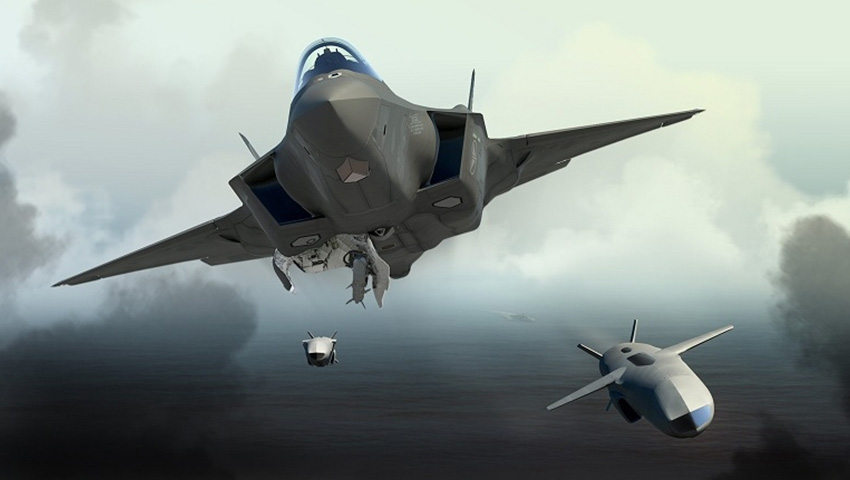As Australia debates the need for renewed long-range strike platforms, the US is re-orientating its posture and defence industry focus to drive the development of long-range strike and air combat capabilities in the face of peer competitor capability developments.
To continue reading the rest of this article, please log in.
Create free account to get unlimited news articles and more!
The growing long-range strike and increasingly potent air combat capabilities of regional and global actors like China and Russia have forced a major strategic rethink for the US and key allies like Australia as they face contested, congested and challenging operating environments.
Acting Secretary of Defense Patrick Shanahan's release summarised the objectives of the budget, saying, "The FY 2020 budget is a major milestone in meeting this challenge and resourcing the more lethal, agile, and innovative Joint Force America needs to compete, deter and win in any high-end potential fight of the future."
At US$57.7 billion, the 'air domain' is the single largest category in the 2020 defence budget request, which shifts the US focus from asymmetric threats, largely in Afghanistan and the Middle East, to focus on redeveloping "enhanced competitiveness" and traditional 'hard power' capabilities to counter great power rivals like Russia and China.
As part of the material acquisitions, the US 'air domain' budget allocation includes a number of block buys, including:
- 78 F-35 Joint Strike Fighters - US$11.2 billion;
- 24 F/A-18 E/F Super Hornets - $2 billion;
- 6 P-8A Poseidon maritime patrol/anti-submarine aircraft - $1.5 billion; and
- 8 F-15EX - $1.1 billion.
Like Australia, the US has also recognised the growing importance and force multiplying affects of 'multi-domain' command and control, and integrated air and missile defence systems, which has served as a major focal point for the 2020 defence budget request, which includes a range of multi-layered, multi-domain systems to enhance the interoperability and capability of each branch of the US armed forces when deployed.
This includes a series of material acquisitions and and research and development funding programs, including:
- 37 AEGIS Ballistic Missile Defence (SM-3) with install - US$1.7 billion;
- Support for Missile Defence Review (e.g. Land-Launched Conventional Prompt Strike, Extended Range Weapon, Space-based Discrimination Sensor Study) - US$1.5 billion; and
- 37 Terminal High Altitude Area Defence (THAAD) Ballistic Missile Defence - US$800 million.
Enhancing these capabilities, the US has stepped up research and development and acquisition programs for key long-range strike and strategic deterrence platforms, which will serve as the linchpin of modern 'joint force' deployments when facing increasingly congested and contested environments, particularly the advanced integrated air and missile defence systems (IAMDS) and area access denial (A2AD) networks being introduced by both Russia and China at key strategic locations in Europe and the South China Sea.
The 2020 budget request request also includes focus on both offensive and defensive platforms and research and development capabilities:
- B-21 Long Range Strike Bomber - US$3.0 billion;
- Long-Range Stand-off Missile - US$700 million;
- Hypersonics weapons development to complicate adversaries’ detection and countermeasures - US$2.6 billion; and
- Directed Energy investment to support implementation of directed energy for base defence, enable testing and procurement of multiple types of lasers, and increase research and development for high-power density applications - US$235 million.
This renewed US focus on high-end capabilities and platforms, particularly long-range strike and 'multi-domain' IAMD and command and control capabilities, are relevant for Australia's strategic planners as the nation and ADF are faced by contested regional operating environments by competitors operating peer-level capabilities, thus threatening Australia's traditional 'technological edge'.
Speaking to Defence Connect in late 2018, Peter Jennings, executive director of the Australian Strategic Policy Institute (ASPI), was quick to point out that while the existing ADF was the most capable it has ever been, largely as a result of the material investment and operational engagements of the last two decades, there was room for improvement, should Australia need to operate alone, or with limited allied support.
"We need to be placing more effort into developing the ADF's long-range strike capability. This includes things like cruise missiles which can launched by platforms across the ADF. We also need to place greater emphasis on upgrading the capability provided by Collins, not just as a stop-gap, but as an imperative, as these submarines will continue to form the point of our deterrence spear for some time yet," he said.
Reinforcing the push to more closely integrate with the renewed US research and development and acquisition programs, Malcolm Davis of ASPI told Defence Connect, "The government aspiration of spending 2 per cent of GDP on defence is simply not enough any more. We need to look at planning our force structure, our capability requirements and spending on a number of factors, including allied strengths and potential adversarial capabilities, not arbitrary figures."
"Starting this conversation is part of a broader discussion ahead of the 2020-21 white paper. We have recognised that a) we can't have same white paper as 2016 and b) we need to start seriously responding to the changing strategic reality, which will require a wholesale review of the force structure and force posture and a renewed focus on long-range strike and power projection," Davis told Defence Connect.
Given the debate on the role of Australia as a military power in the face of mounting regional tensions, have your say on Australia's participation in joint acquisition and research and development programs in the comments section below, or get in touch with
Stephen Kuper
Steve has an extensive career across government, defence industry and advocacy, having previously worked for cabinet ministers at both Federal and State levels.

 Login
Login








